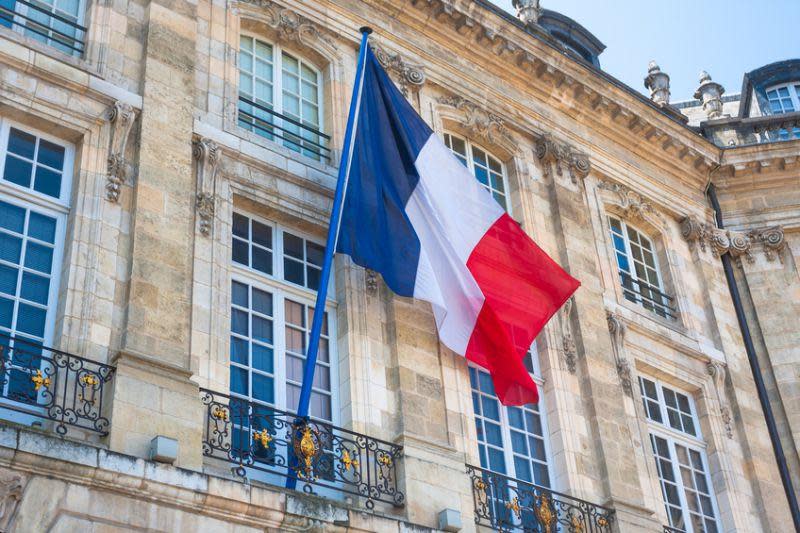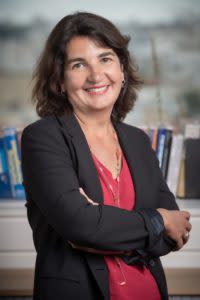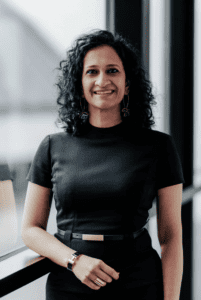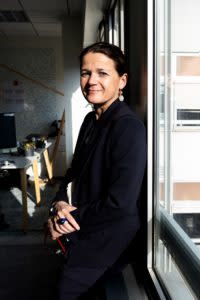The Masters Of France: Deans At 3 Top Schools On Why Their MiMs & MiFs Excel In The Rankings

France is always well-represented in the Financial Times rankings, but in 2023, the country’s top business schools really made a collective statement, with five schools in the top 11 of the Master in Management list and five in the top nine — including the top four schools overall — in the Pre-Experience Master in Finance ranking. What makes France’s master in management and master in finance programs so exceptional? Poets&Quants gathered the perspectives of deans at Neoma, ESSEC, and Emlyon whose programs all ranked in the top 25 in FT’s 2023 MiM ranking.
Master in management programs have historically been the flagships of French B-schools. But what makes French MiMs the crème de la crème? Delphine Manceau, dean at Neoma, in Paris, says there are three reasons for the high performance of French B-schools.


Neoma Dean Delphine Manceau: “French business schools have been really trying to include topics like corporate social responsibility”
“The first reason why French MiMs are so dominant is, they have a very strong connection to the business world — students get within-company experiences,” Manceau tells Poets&Quants. “The second reason is that these programs are highly international. They usually have between 20-40% of international students.
“The third reason is the culture of agility and innovation that many business schools have.”
The international nature of a program is sure to boost its rankings, especially when that accounts for a large portion of how the FT ranking is weighted: international faculty (weighted 5%), international students (weighted 5%), international board (weighted 1%), international work mobility (weighted 6%), and international course experience (weighted 6%) are all key factors.
Neoma landed at No. 25 in the FT 2023 MiM ranking — its highest ranking yet, and first time in the top 25. It placed well in the international categories, landing at No. 50 in international work mobility and No. 9 in international course experience. The Neoma MiM has 40% international students, a 70% international board, and 80% international faculty.
NEW RANKING CRITERIA: ALUMNI NETWORK, DIVERSITY, SUSTAINABILITY
This year, the most B-schools to date took part in The Financial Times’ MiM ranking — 142 MiM programs, up from 135 in 2022. According to FT, the magazine has made some distinct changes to their categories. They decided to add three new ones: Alumni Networks, Student Sector Diversity, and school Carbon Footprint. They removed two: the number of languages category, and alumni recommendations of schools other than their own categories.
“When you look at the new criteria that FT included this year, French schools do really well on them. This might explain why many are up in the ranking,” says Manceau.
Alumni are often tightly linked to the B-school community post-grad at Neoma. The school’s MiM placed No. 14 for Alumni Network out of the 100 ranked programs.
Financial Times Masters in Management 2023 – Top 30 Schools
Rank in 2023 | Alumni network rank | ESG and net zero teaching rank | Carbon footprint rank | |
1 | HEC Paris | 15 | 5 | 31 |
2 | University of St Gallen | 3 | 28 | 8 |
3 | London Business School | 1 | 26 | 38 |
4 | ESCP Business School | 12 | 8 | 8 |
5 | Essec Business School | 21 | 14 | 8 |
6 | Tsinghua University School of Economics and Management | 22 | 81 | 78 |
7 | EMLyon Business School | 16 | 3 | 8 |
8 | Esade Business School | 24 | 4 | 4 |
8 | SDA Bocconi/Università Bocconi | 10 | 39 | 1 |
10 | Rotterdam School of Management, Erasmus University | 54 | 23 | 4 |
11 | Edhec Business School | 8 | 7 | 8 |
12 | Shanghai Jiao Tong University: Antai | 9 | 50 | 58 |
13 | WHU — Otto Beisheim School of Management | 6 | 30 | 31 |
14 | Iese Business School | 57 | 2 | 6 |
15 | Nova School of Business and Economics | 31 | 52 | 8 |
16 | IE Business School | 30 | 12 | 2 |
17 | University College Dublin: Smurfit | 4 | 44 | 68 |
18 | Prague University of Economics and Business | 19 | 54 | 78 |
19 | Stockholm School of Economics | 20 | 29 | 68 |
20 | ESMT Berlin | 29 | 66 | 31 |
21 | University of Mannheim Business School | 17 | 34 | 8 |
22 | Tongji University School of Economics and Management | 5 | 17 | 78 |
23 | Vlerick Business School | 7 | 15 | 78 |
24 | WU Vienna University of Economics and Business | 68 | 21 | 68 |
25 | Neoma Business School | 14 | 38 | 8 |
26 | Católica Lisbon School of Business and Economics | 43 | 27 | 8 |
27 | Audencia | 45 | 10 | 41 |
28 | Warwick Business School | 75 | 85 | 8 |
29 | Grenoble Ecole de Management | 77 | 73 | 8 |
30 | Luiss University | 71 | 19 | 6 |
“The alumni networks in France are really strong — they are part of the identity of French business schools,” Manceau says. “We have lots of student clubs, sports, and activities. This might be related to the alumni network, because when you spend so much time together in activities on campus, it creates links for life. This is really part of the business school experience in France. People are connected.
“French business schools have been really trying to include topics like corporate social responsibility. Young generations are really pushing for it, so it is heavily in the current curriculum. The ministry of higher education has also encouraged us to include these topics more and more.”
Neoma excels in sustainability and related topics. Its MiM ranked No. 8 in Carbon Footprint and No. 38 in the ESG and Net Zero Teaching. French B-schools have been striving for gender parity as well. Women account for an impressive 51% of the MiM class, 50% of the board, and 48% of their faculty.
“I think gender diversity is really improving at French schools, with more female students. Among faculty, it’s generally less balanced, but it’s a topic I’m really committed to — recruiting female faculty — and being a female dean helps of course,” says Manceau.
ESSEC: RIGOR, REPUTATION & RELEVANCE
ESSEC placed No. 5 in the FT MiM ranking this year, and Aarti Ramaswami, dean of pre-experience programs, shared why she believes ESSEC and other French MiMs are at the top.
“ESSEC was founded over one hundred years ago and has a rich history, and the Grandes Écoles system is something that is very unique to France. There’s a very deep rooted understanding of business education, with a focus on business and society coming together,” says Ramaswami. “The MiM offers a great return on investment. Students receive an education that helps them professionalize sooner. Many of the MiMs offer the opportunity to gain work experience while studying, which is not only a great opportunity to give them company-sponsored experience, but a great opportunity to give them a foothold in the industry that they want to work in.”


Aarti Ramaswami, ESSEC’s dean of pre-experience programs: “Whether it’s through career fairs or projects, we have our students traveling to hubs in London and beyond”
ESSEC is quite dedicated to producing well-educated, responsible, and committed leaders for the future.
“We are pragmatic in terms of professional preparation, and ultimately landing jobs. That’s our job as a business school – to provide the most relevant talent with the best competencies,” says Ramaswami. “Because of our reputation, we have a feedback loop. Year after year, we continue to have a good reputation. There is a market that observes us and we get some of the best talent.”
ESSEC’s Master in Management is a magnet for global talent backed by compelling rankings. It landed at No. 5 in the international course experience rank category and No. 29 in the international work mobility rank. The MiM has an 88% international board, 64% international students, and an 80% international faculty.
“International students want to live where they study. We have a lot of students that want to work in France. There’s an excellent job market- French and English speaking. For foreign applicants, France is attractive because of its deep roots in luxury and hospitality. We also have a very strong banking, finance, and consulting industry, which many of our students are interested in,” says Ramaswami.
The B-school landed at the No. 21 for alumni network. They have over 65,000 alumni globally, many of whom hold positions in esteemed global companies.
“We have very strong networks around the world. Our students want to work in Europe, but since we have alumni globally, we have a wide network,” says Ramaswami.
In the current Financial Times rankings, ESSEC takes a standout No. 3 place among the featured top five Master in Finance programs.
“Rigor, reputation, and the relevance — these are the three things that I feel make the MIF stand out,” says Ramaswami. “The Master in Finance program is a very rigorous program. One of the things that adds to the visibility and the reputation of the program is that we have fantastic professors who help to make the program excellent. Beyond that, we have three tracks — Corporate Finance, Financial Markets and Fintech Analytics — and excellent partnerships with companies. Whether it’s through career fairs or projects, we have our students traveling to hubs in London and beyond,” says Ramaswami.
EMLYON’S TAKE ON MIM SUCCESS
Emlyon landed at No. 7 in this year’s FT MiM rankings. What’s the key to their success? No mysterious secret here—just a commitment to best practices and years of molding the program to excellence.
“If we had a special formula, we would probably not give it away. But, seriously, there is no secret formula, except a continuing investment in academic excellence, critical thinking and reflexivity, and students’ professional placement,” Dean of Emlyon Isabelle Huault tells P&Q.


Isabelle Huault, dean of Emlyon: “There is no secret formula, except a continuing investment in academic excellence, critical thinking and reflexivity, and students’ professional placement”
Huault says French B-schools dominate the master’s rankings because of their deep-rooted history and strong academic programs, high-quality faculty, internationalization, their strong track record of career placements, and excellent alumni network – in which they placed No. 16 this year.
As one might expect, Emlyon places a big emphasis on experiential learning through internships, consulting projects, and real-world business challenges.
“This practical experience is invaluable in building problem-solving skills but also critical thinking,” says Huault. “The feedback we have from employers is that our graduates stand out as adaptable to many situations and environments and they think strategically and solve problems in a pragmatic and hands-on way.”
She notes that unique to the French educational system are their “classes préparatoires” (prépas), which rigorously prepare students pre-higher ed for entrance exams to prestigious universities and Grandes Écoles through an intense academic curriculum covering various subjects.
Their MiM and other French B-schools often employ renowned professors and researchers, which naturally attracts top students and enhances the school’s reputation – which of course helps them succeed. The Emlyon MiM shines in gender diversity, with women constituting 49% of students, 41% of the faculty, and holding 50% of board positions.
Emlyon and other French B-schools have made strides in globalizing their MiMs, offering courses in English and creating a network of global partnerships. Emlyon’s MiM ranks No. 12 in international course experience and No. 35 in international work mobility rank. A good 63% of their faculty are international, they have a 67% international board, and 44% of their MiM students come from abroad.
“Our school is committed to sustainability and corporate social responsibility (CSR). The school integrates these principles into its curriculum and research, preparing students to be socially responsible leaders in their careers,” says Huault — and it shows. The program placed an impressive No. 3 in ESG and Net Zero Teaching, and No. 8 in carbon footprint, as did ESSEC.
DON’T MISS REINVENTING WHAT IS TAUGHT IN A MASTER’S IN MANAGEMENT and THE TOP MASTER IN MANAGEMENT PROGRAMS IN THE UNITED STATES
The post The Masters Of France: Deans At 3 Top Schools On Why Their MiMs & MiFs Excel In The Rankings appeared first on Poets&Quants.
